Joy Bangla
Story by Carina McAllister (Medical Biology, ’25) with Alan Bennett
Hello from beautiful Bangladesh!
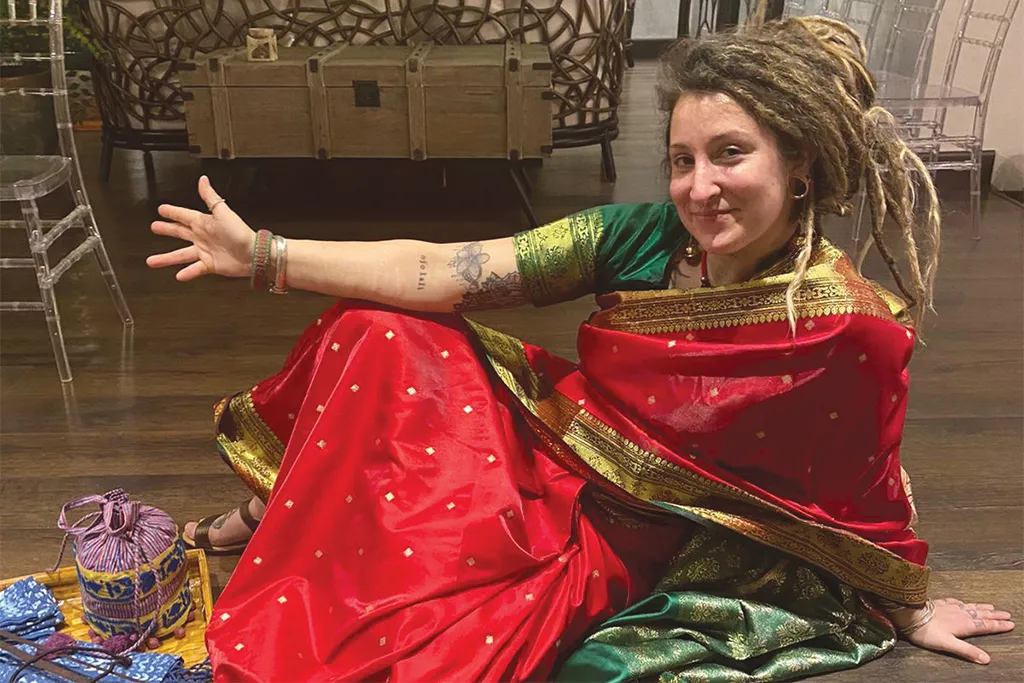
Hi! My name is Carina McAllister, and I love to experience authentic local culture. In my 20s, I lived overseas in Southeast Asia and North Africa which, at 30, led me to pursue a medical education from UNE with the hope of working in international aid after I earn my degree. As a freshman, I had the opportunity to fly to Bangladesh during spring break for a medical mission where I toured the medical college in Tangail, interviewed women in the Kandapara brothel, and visited with locals in Dhaka. On our final night, I dressed in the national colors of Bangladesh, green and red, to celebrate Bangladeshi culture and the Father of the Nation holiday.
A downtown building is ship shape
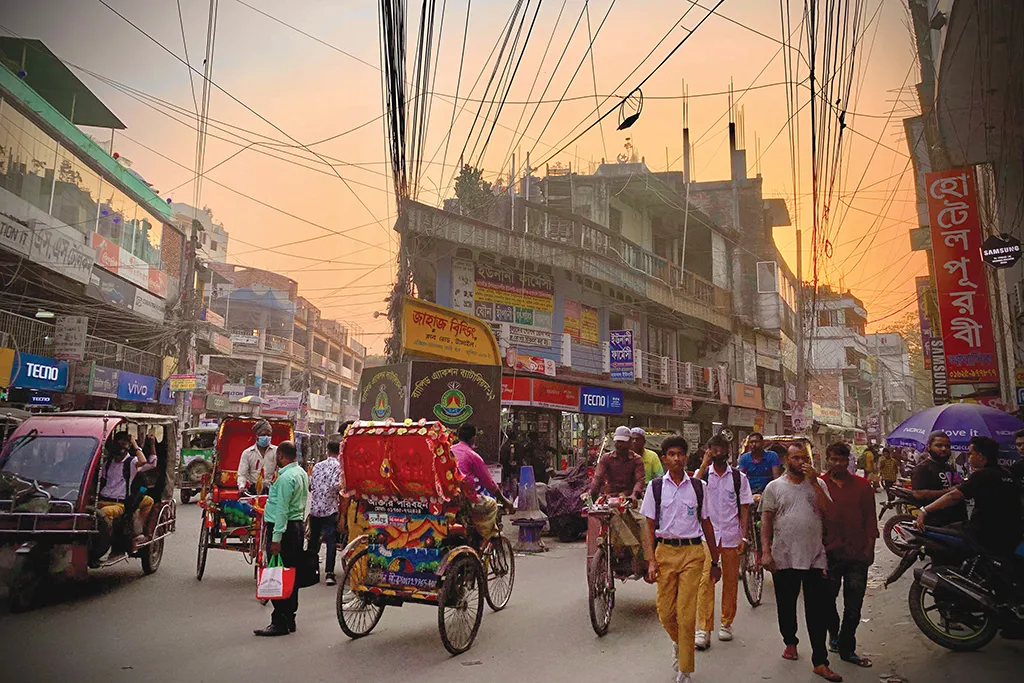
Walking around downtown Tangail is always exciting. In the cooler evenings, thousands of people crowd the streets while rickshaws zig, zag, and blare their horns. Sizzles of street vendors cooking, chuckles of friends laughing, and distorted Bollywood tunes playing out of TVs in tea stalls are all mixed into an endless din. The smells of pani puri and other spicy snacks waft through the air. Colorful marigold garlands and rickshaw art glow during the golden sunsets. The experience is all-encompassing, like you are part of the heartbeat of the world.
Skylines are booming in Bangladesh
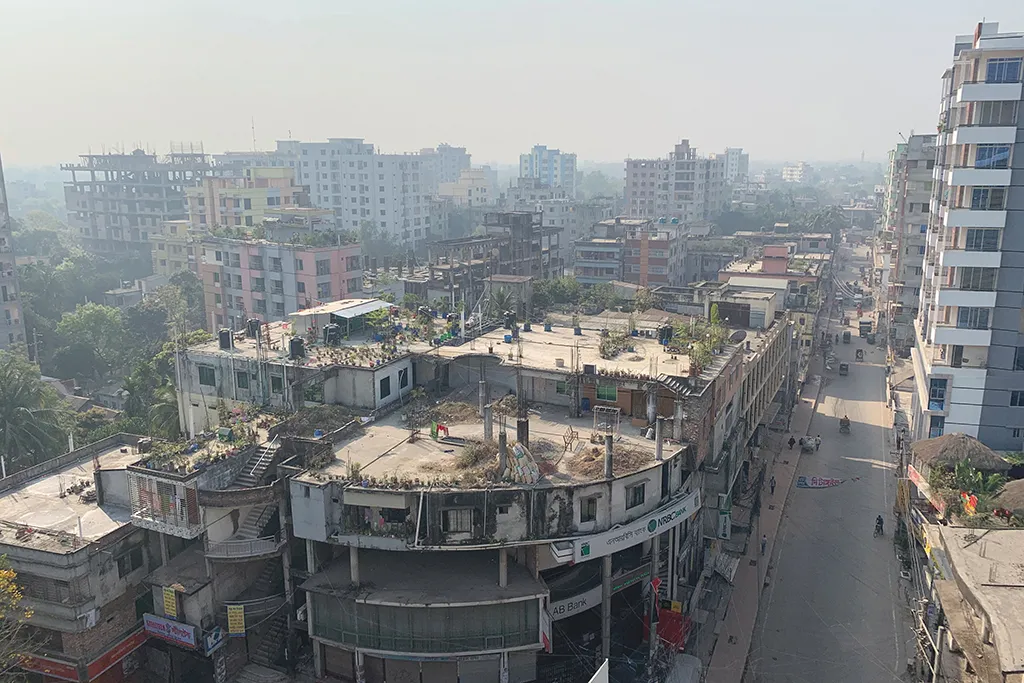
When we walk around in America, we are used to seeing all the buildings neat and tidy, wrapped up in perfectly laid bricks or mirrored glass. In Bangladesh, many areas are experiencing massive growth, so when a building is constructed, it is often left unfinished at the top so that it can be continuously added onto to keep pace with growth in the city.
Learning the local language
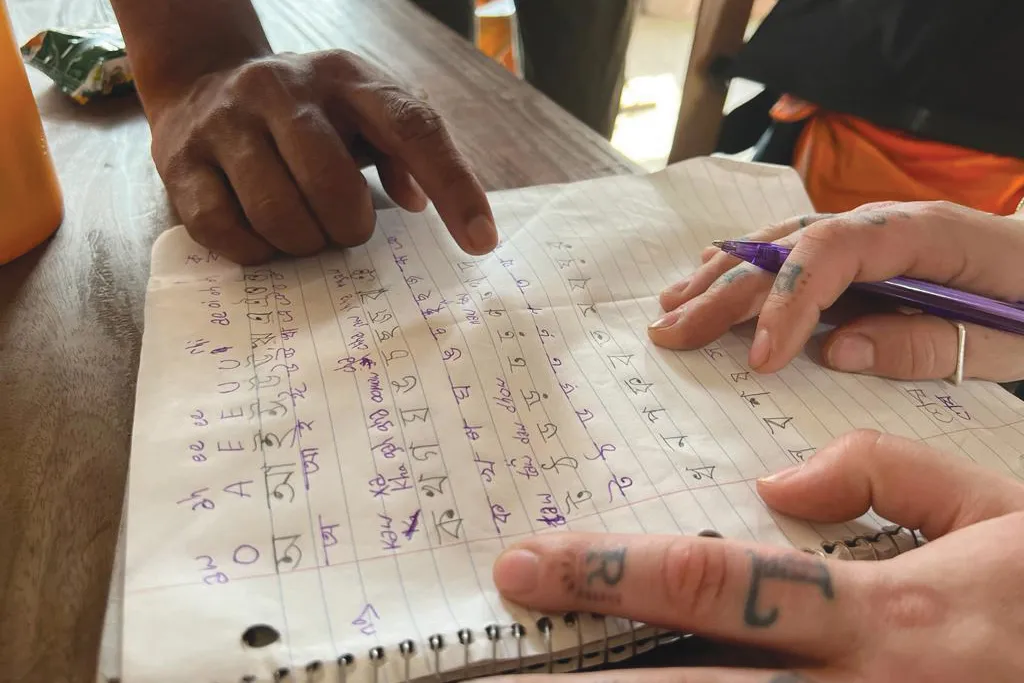
Bengal people are very patriotic, and rightfully so. They fought very hard to be an independent nation — officially becoming their own state on March 26, 1971! — and they even had to fight for their language. Many university students were killed during a protest on Feb. 21, 1952, for the right to keep the national language as Bangla, as opposed to Urdu. I experienced a lot of joy learning Bangla because of how excited people were to teach me and how happy people were when I could introduce myself and ask for their name in their own language. There is something really special about connecting with another person on that level.
Saree shopping includes a performance
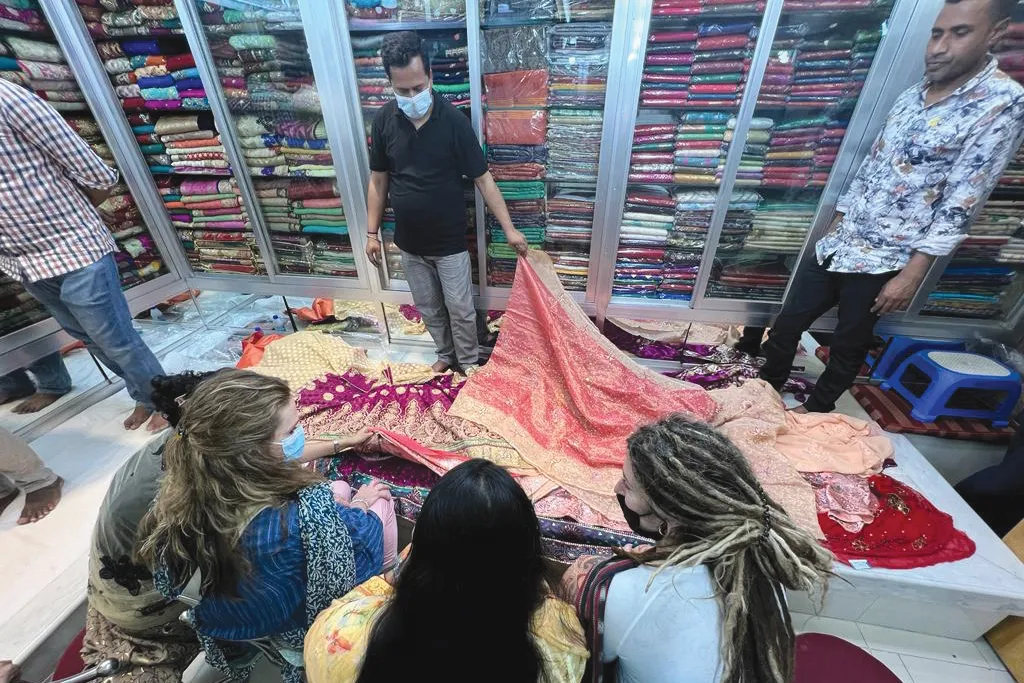
In Bangladesh, most women still enjoy wearing the traditional clothing, as it is an extension of their cultural pride. Sarees are incredibly beautiful and flattering on every body shape. Shopping for sarees is much more fun than shopping for T-shirts, as the men who sell them will put on big displays. They will take the sarees off the shelf and lay out all five-and-a-half meters (six yards!) of fabric. Sometimes, they will even pretend to wear them and lay the
fabric on their bodies and pose!
In Tangail, cityscape and nature go hand-in-hand
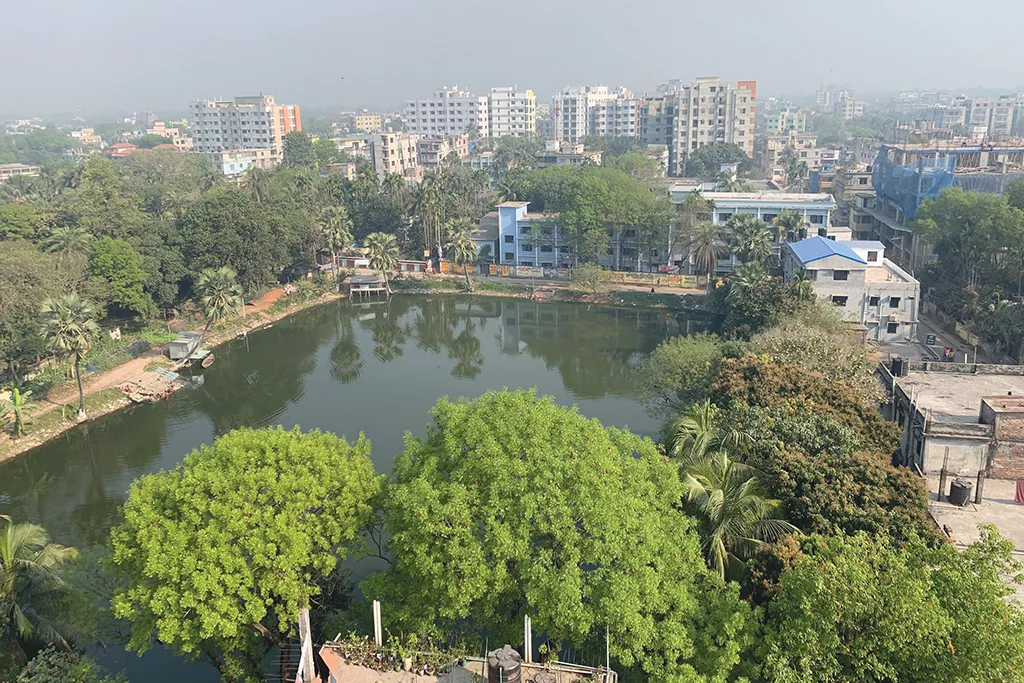
New York City is famous for Central Park because the bulk of the city is a concrete jungle. In many cities across Asia, it is a different story. Tangail is exemplative of how much nature is intermingled amongst the man-made structures of the modern world. On one hand, this is very beautiful. Seeing trees and flowering shrubs growing out of the middle of a road is a great way to allow birds and pollinating insects to thrive in urban areas. On the other hand, water ways, such as the one in this photo, can become very polluted due to the lack of proper zoning and development.
Art is abundant in Dhaka
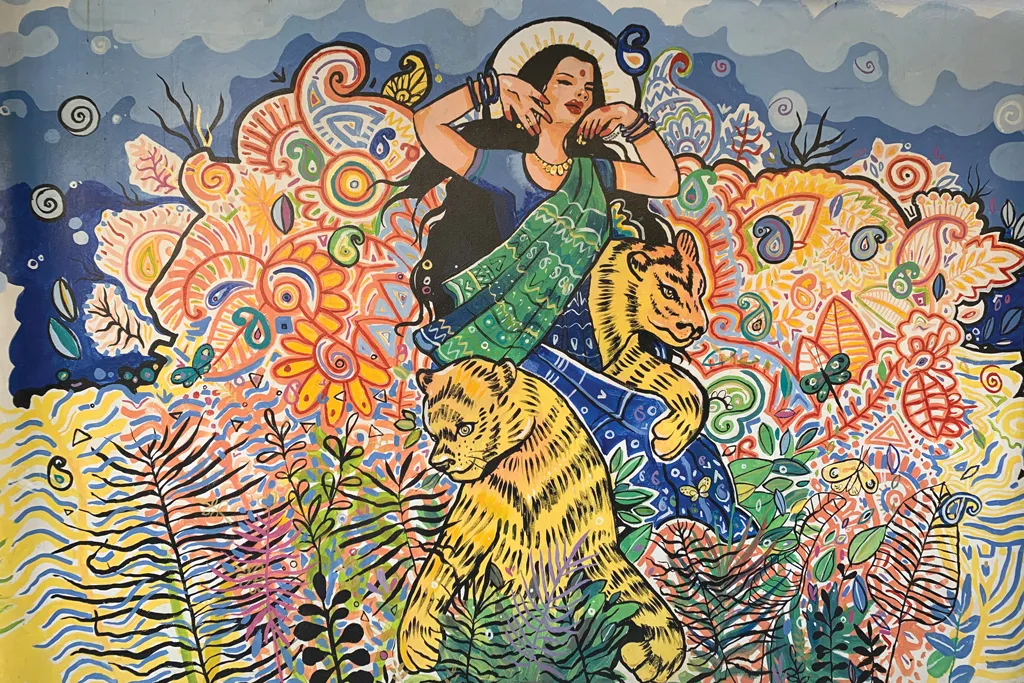
Dhaka is a very cosmopolitan city, and it has a thriving artistic community. While there, I was introduced to several artists and was really blown away by how many young people are passionate about making their city beautiful. The people of Bangladesh have an incredible talent for creating beauty in the everyday by painting walls, rickshaws, and sidewalks.
Delicious traditional treats
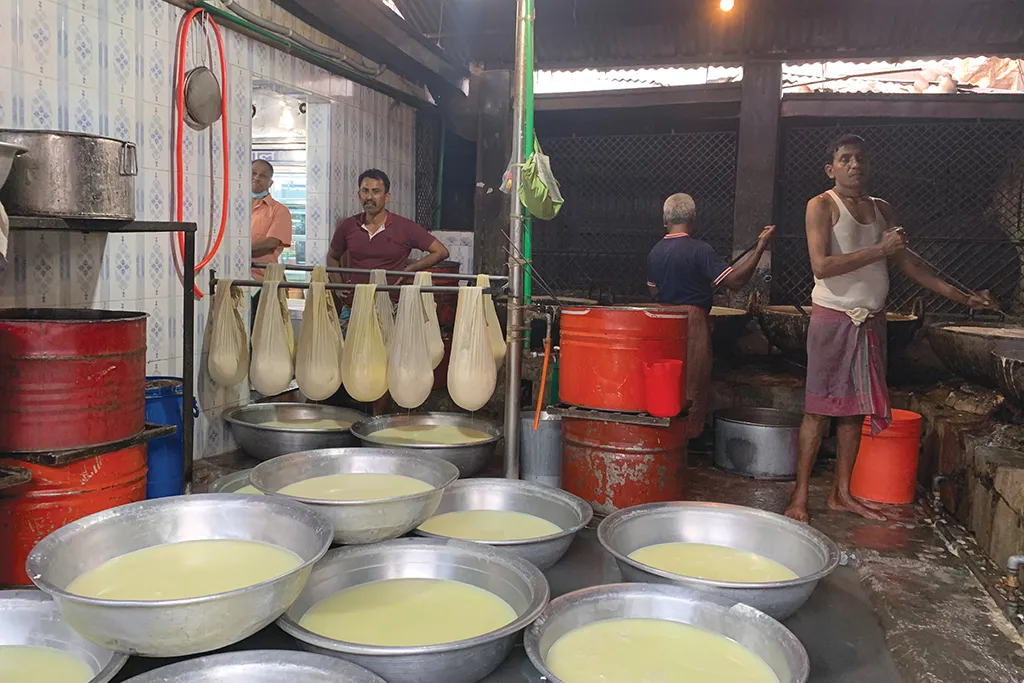
The best part of Bangladesh was the food. I enjoyed everything I tried, especially the sweets. Tangail is famous for one sweet in particular, called the chom chom. It is a cheese! It is less like a mozzarella stick and more like a deep-fried cheesecake bite. The milk is strained, kneaded into balls with cardamom, and boiled in sugar for hours in traditional kitchens like this, before it is enjoyed locally or exported all over the country and the world.
Bonus Travelogue: Clinical Care on the Coast
Story by Ana Maria Castellanos (D.P.T., ’23) and Alan Bennett
Greetings from beautiful Belize!

Hello! My name is Ana Maria Castellanos, and I am completing my final year in the Doctor of Physical Therapy program at UNE. This summer, I had the incredible opportunity to complete an eight-week clinical rotation at the Hillside Health Center in Belize, just outside the town of Punta Gorda. There, I provided volunteer care for patients and educated the center’s employees about best practices in physical therapy. Here, I’m standing at the sign that marks the city line of Punta Gorda. The beautiful artwork on the sign is art you can see in many different parts of Belize, in which artists free-draw on concrete slabs to create beautiful work.
Overlooking Punta Gorda

Flying into Punta Gorda was exciting and beautiful. I am originally from Tegucigalpa, the capital city of Honduras, so this trip felt very close to home for me. This view provides a quick glimpse of Punta Gorda, a seaside town in the southern part of Belize that is home to about 6,000 people. In the back, you can see two small mountain peaks, visible from most areas of town. If visitors wish to hike the mountains, they can be escorted to the trails by the Belizean military.
Interprofessional experience
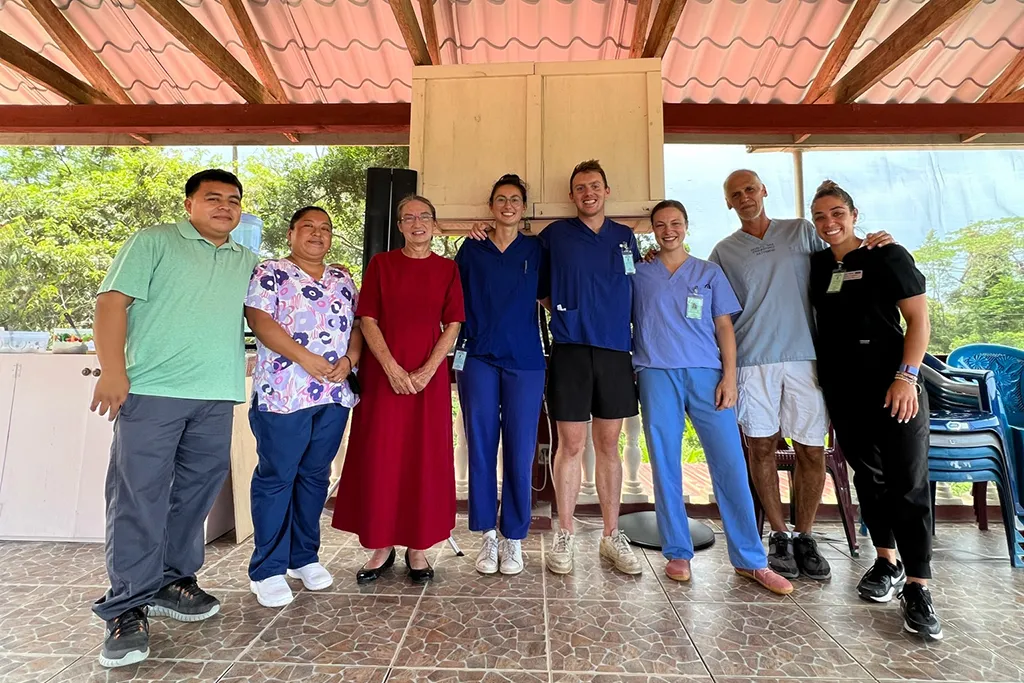
Hillside Health Center is located just seven minutes outside of Punta Gorda by bus. While there, I worked alongside a mix of pharmacists, nurses, physicians, and physical therapists from all parts of the world, including Austria, London, Armenia, Texas, and Belize! This photo was taken on a Friday afternoon after our weekly meetings. During this time, students, preceptors, and board members would reflect on the week’s successes and what we would like to improve on as a team going forward.
Exploring ancient times
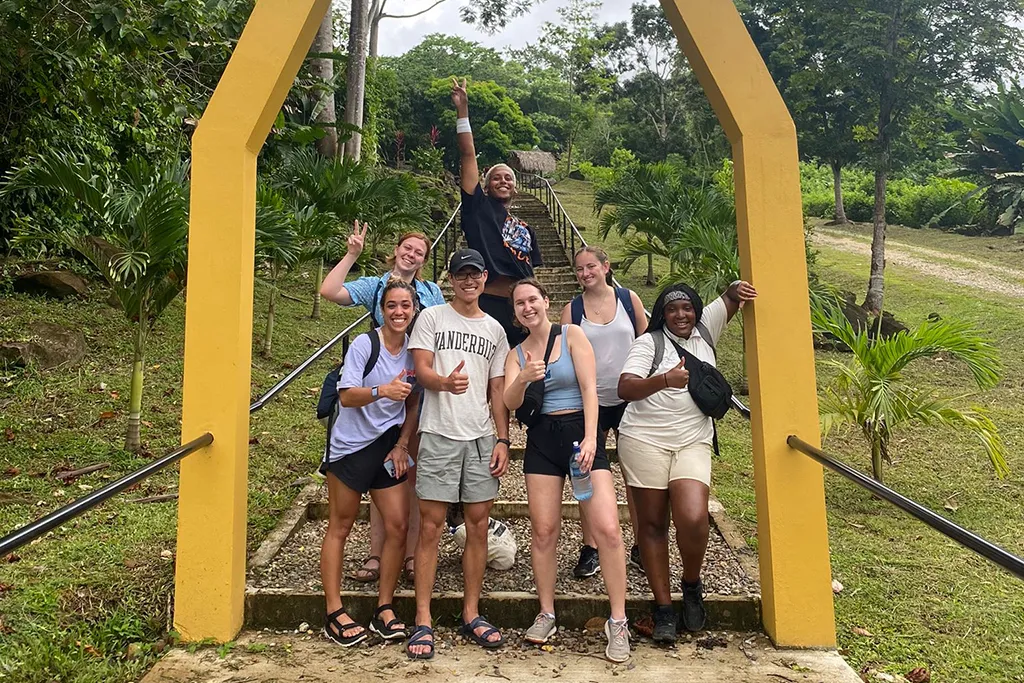
There are many Mayan ruins found throughout Central America, primarily in Mexico, Belize, Honduras, and Guatemala. Here, on one of our cultural experience days, the other students/volunteers and I visited the Nim Li Punit ruins, a medium-sized Mayan complex in the south of Belize. The name is Kekchi Mayan for “Big Hat” and was adopted after an image of a ruler, wearing an elaborate head-dress, was found depicted on a slab at the site.
Tortillas with Kekchi Mayan women

After spending time at the ruins, we visited a nearby women’s center, where we enjoyed lunch and learned how to make corn tortillas and weave baskets. Tortillas are eaten with many meals in Belize, and here they are handmade. I had the privilege of helping women from the Kekchi Maya community make corn tortillas from scratch, and it’s a fascinating process. They start by grinding the corn on a slab made of volcanic rock (which is passed down through the family). They then roll up the maize and flatten it out to make tortillas, then place them on a heated slab of rock that is like an oven. They do not use tools to flip the tortillas, as they say it is best to use your hands to prevent any air bubbles.
Learning to drum with the Garifuna
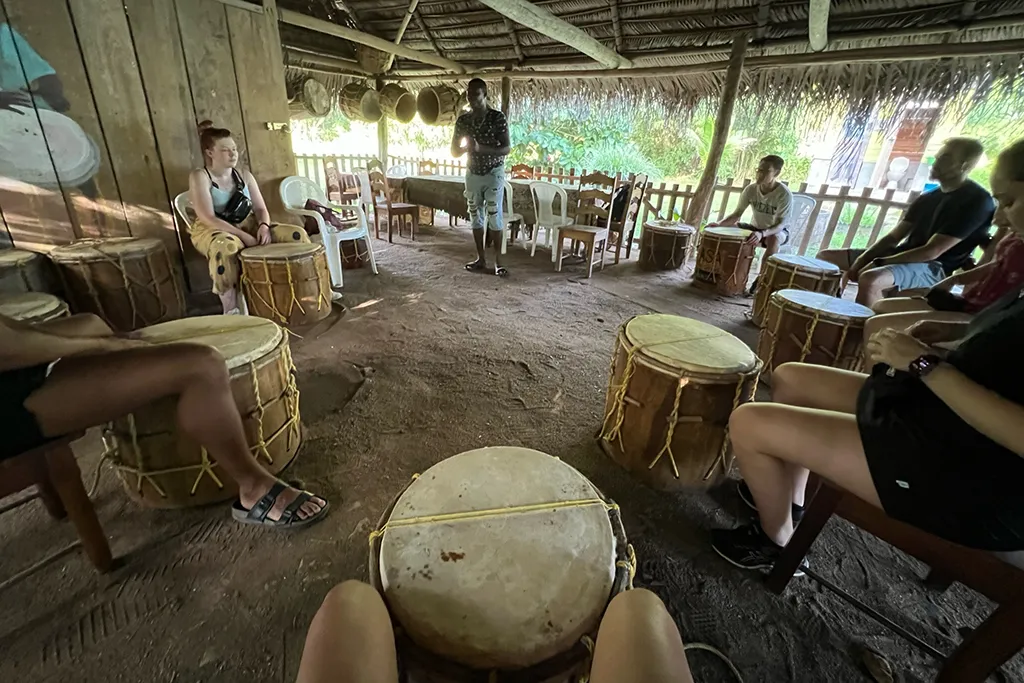
There are many ethnic groups living in Belize and in Punta Gorda. One such group, the Garifuna, are descendants of an Afro-Indigenous population from the Caribbean Island of St. Vincent. In town, they provide a “Garifuna Experience” for participating groups. This experience includes learning to play with the Garifuna drums, dancing the Garifuna dance called Punta, and enjoying an authentic Garifuna meal, including seafood stews and soups, cassava pudding, and plantains. This picture includes other students and volunteers who came from all over the world for this rotation.
In the heart of the jungle
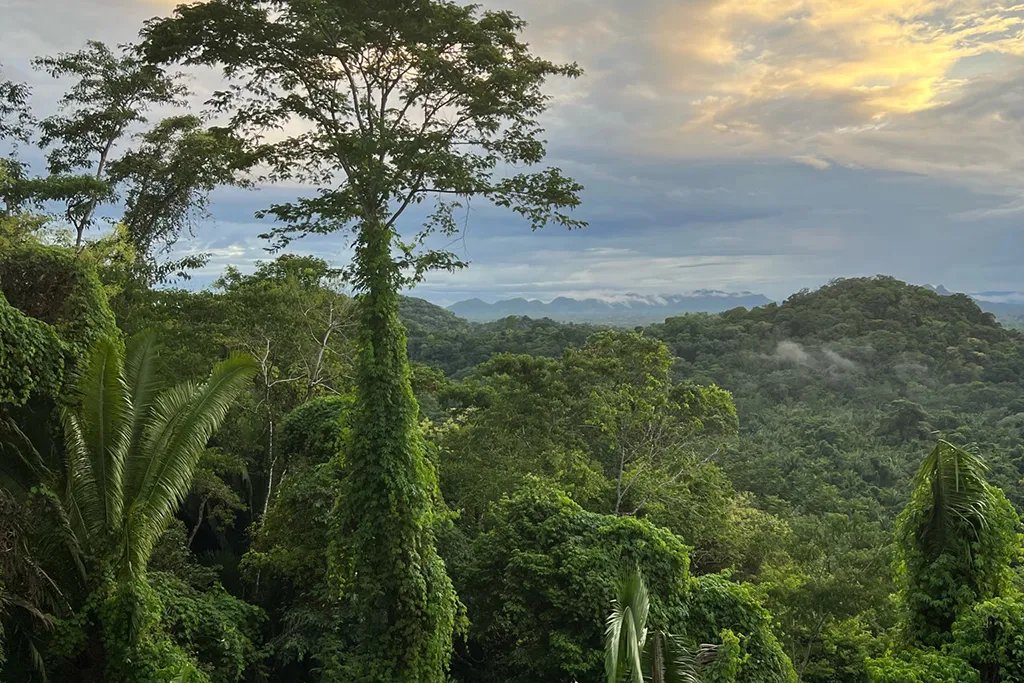
This stunning view can be found at the Copal Tree Lodge, a resort in Punta Gorda. The resort is located in the middle of the jungle and is at the top of a hill, so you can enjoy many beautiful views like this one. The resort is one of many jungle resorts in Belize, which is a pioneer in the realm of ecotourism. Copal Tree Lodge also offers diving and snorkeling excursions, hiking, and canoeing. But watch out — as with any accommodations in the jungle, there are large populations of insects, spiders, and even howler monkeys!
At the head of the class
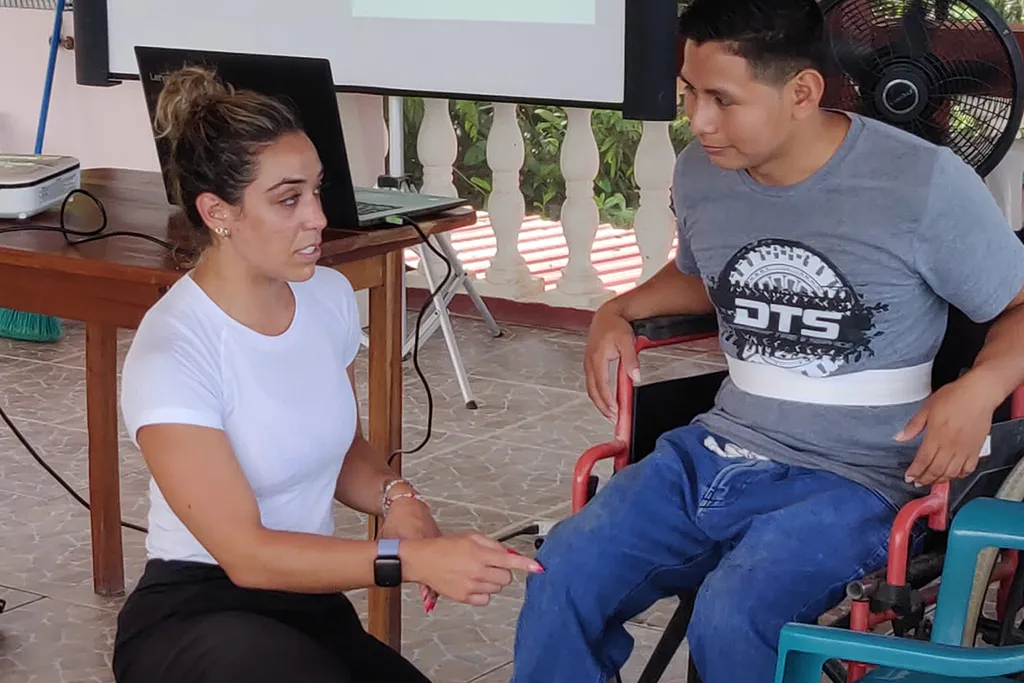
During my time at Hillside, I presented four lectures to the staff and students/volunteers. One lecture presented was “Body Mechanics in the Workplace,” where staff were interviewed to see what caused them pain at work. I then offered techniques for better body mechanics to decrease their risk of injury and pain. Here, I am helping one of the center’s security guards learn the proper way to transfer a patient from a wheelchair to another seat, since he is often helping patients get into their cars after their physical therapy sessions. I have always been interested in doing clinical care, and this trip was very valuable and humbling for me.
